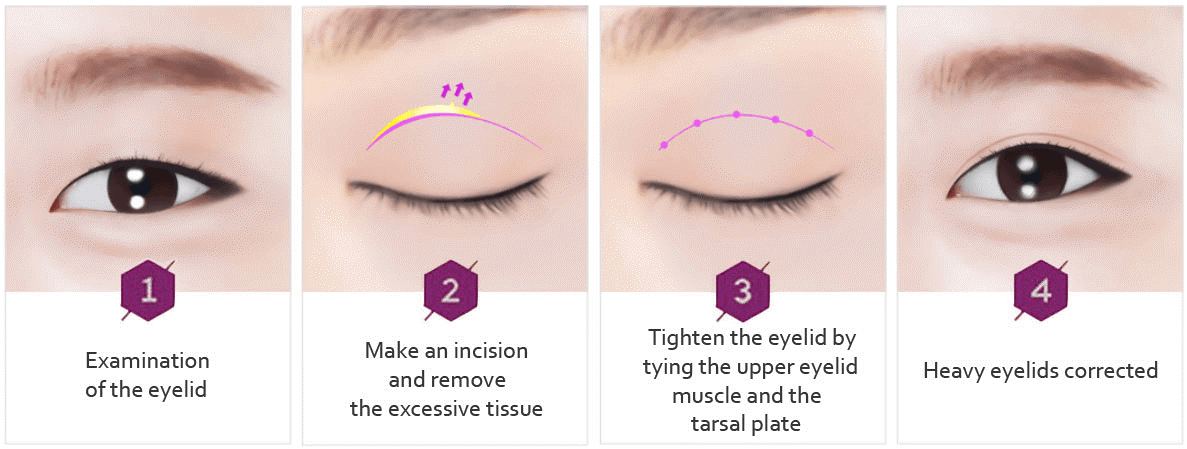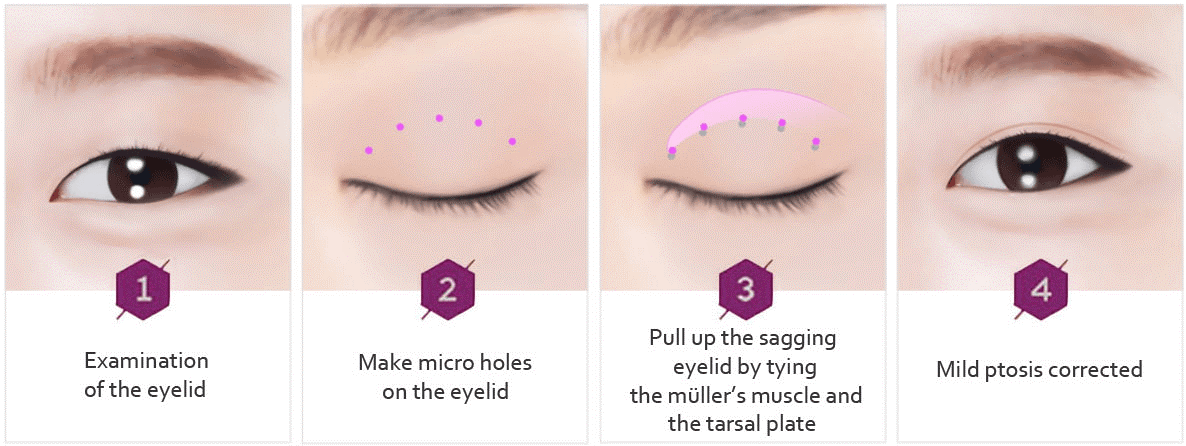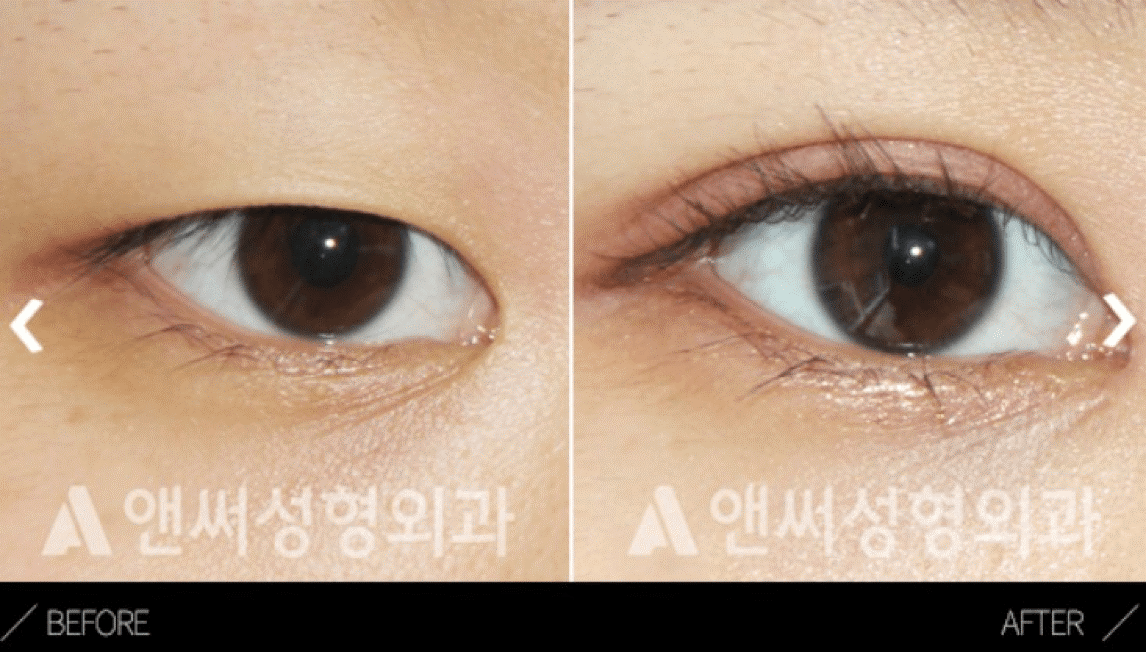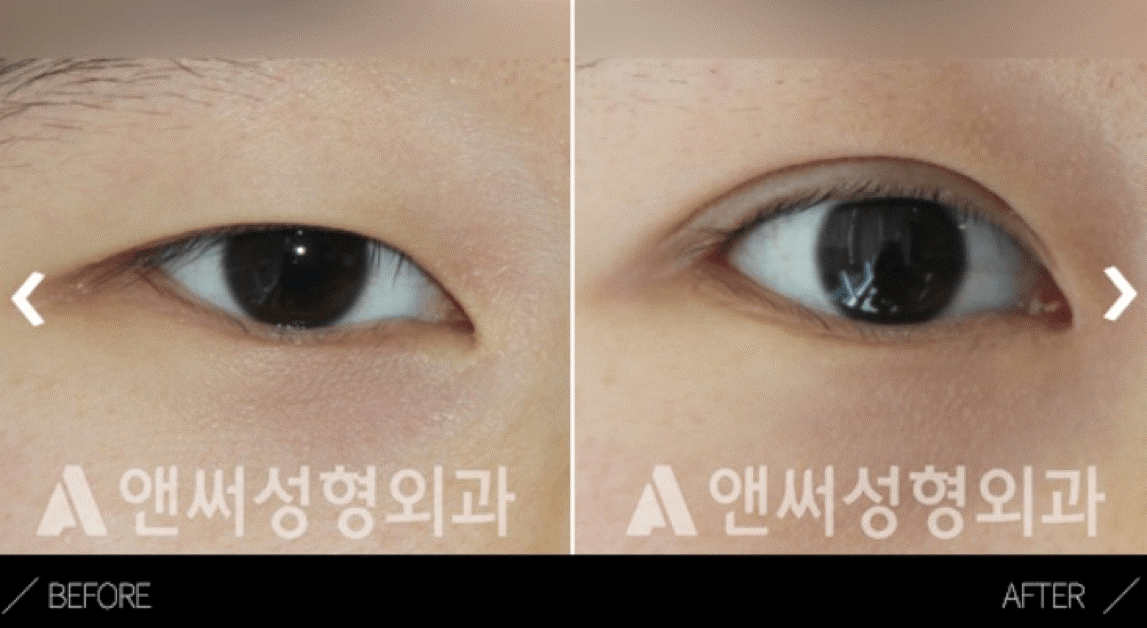Ptosis Correction in Korea: Quick Facts Before Getting Ptosis Surgery
Ptosis Correction in Korea: Quick Facts Before Getting Ptosis Surgery

Ptosis correction is a common procedure that fixes the appearance of the upper eyelid. Having this surgery done is a relief to a lot of people because having droopy eyes can always make one look more tired than they are. It can also give the impression that a person is not too involved in a particular activity. Sleepy eyes, as they also call it, may have a huge effect on the confidence and eyesight of some people if not treated accordingly. If you are one of those who have symptoms of ptosis, read on to know more about the condition, and it’s treatment.
What is Ptosis Correction?
Ptosis, also known as drooping eyelids or blepharoptosis, is a condition that can affect one or both of the upper eyelids, wherein it lowers to more than the normal position. In some cases, a drooping eyelid can become severe to the point that it interferes with the person’s vision. Some of the causes of ptosis are the following:
- Congenital ptosis – A condition that is present when an infant is born, which is possibly brought about by genetics.
- Acquired ptosis- The condition acquired later in life due to tearing, stretching of the tendons, local eye problems, and nerve problems.
- Aponeurotic ptosis- A condition brought about by the aging process.
Ptosis correction is a surgical procedure that tightens the levator muscles, which is responsible for lifting the upper eyelid. The procedure can be considered as an aesthetic surgery if it only changes the person’s appearance. However, if the condition affects the person’s vision or health, then it is considered a medical surgery that can be paid by insurance. There are two kinds of methods that are used during a ptosis correction procedure. Which method to be used is determined after the consultation with your doctor, where they analyze your upper eyelid using their technology and expertise. The two methods are the incisional and the non-incisional method.
Incisional
This method involves the removal of excess fats and muscles in the thick and thin layers of the eyelid. The feature of this method is a small incision on the upper eyelid. This kind of method is recommended to those who have unnecessary eyelid fats, serious drooping eyes, and severe-looking sleepy eyes.
Non-incisional
This method involves the removal of unnecessary skin only in the upper eyelid. It features the use of micro holes that result in a more natural look, which produces minimal scarring and swelling. This method is mostly recommended for those who have thin eyelid skin, mild drooping of the eyelids, and those who do not have seriously tired-looking eyes.
Ptosis Correction in Korea
Why should you have your ptosis correction surgery in Korea? Because, first of all, South Korea has been dubbed as the “plastic surgery capital of the world,” thus anything that involves plastic surgery, whether for cosmetic or medical purpose, South Korean surgeons can do it. Second, South Korea is well known for ptosis correction to the extent that, according to estimates, it has the highest rate of people having the eyelid surgery in the world when measured in proportion to the country’s population. Thus, Korean plastic surgeons have vast knowledge and experience of anything involving the eyelid anatomy than any other plastic surgeons from other parts of the world.
What is/are the benefit/s of Ptosis Correction?
Having issues regarding the eye is a struggle for many since the eye is our way of seeing the world, and having ptosis can block vision or cause stress to the eye and its surrounding areas. For this matter, getting ptosis correction surgery can give several benefits to those suffering from the condition. The benefits include:
- Improved vision
- Reduction in eye strain
- Improved appearance of the eyelid
- Better eyes and eyelid symmetry
- Avoidance of getting wrinkles in the forehead because of too much flexing to open the eyes
How is Ptosis Correction Done?
Ptosis correction surgery is known as the most complex procedure involving the eyes. This is why a well-experienced plastic surgeon should lead the surgical procedure. The whole process can last from one to two hours after the administration of local anesthesia, sometimes combined with sedation, on the patient.
Incisional method

- The surgeon first examines the patient’s upper eyelid.
- They then design the line that is suitable for the shape of the patient’s eyes.
- They make the incision by following the line that they drew as a guide.
- They remove the excess fats and tissue from the patient’s eyelid.
- The muscles are then pulled up by tying the eyelid muscle and the tarsal plate together.
- The eyelid is sutured and made sure that everything is in its proper place.
Non-incisional method

- The surgeon examines the upper eyelid and how it is covering the patient’s pupil.
- They then make micro-holes on the upper eyelid instead of an incision.
- The mildly drooping eyelid is cut short by tying the muscle that opens and closes the eyes.
- They clean the eyelid and put on the necessary bandage before the procedure ends.
Ptosis surgery recovery time
The recovery time after undergoing ptosis surgery takes about one to three weeks. During those days, when your eyelids are healing, it is possible for them to feel tight and sore at the same time. Also, your eyes may be watery, itchy, dry, and sensitive to light. It is important to take good care of your eyelid during this time by not rubbing, cleaning it often, and putting an ice pack every 2-3 hours during the first three days. For pain and discomfort, your doctor will give you the proper medications that should be taken orally as well as instructions on how you should take care of yourself and the operated area. To avoid complications, you must follow your doctor’s instructions and attend the scheduled follow up checkups. After 10-14 days, most people can go back to their work and daily activities with no issues.
Ptosis Correction before and after
Whether the method used was incisional or non-incisional, the outcome of the procedure is the same. If you look at the before and after pictures below, it is obvious that the eyelids have improved significantly for the three patients. The pupils have increased visibility, and the eyelid looks more refined with a proper crease.



Ptosis correction surgery is a good solution to people who are having problems with the weakened muscle in their upper eyelids. There are several causes of ptosis from genetics to accidental tear of the eyelid muscle because of eye rubbing. Most of the causes of ptosis, as mentioned above, cannot be prevented; that is why the ptosis surgery can come in handy.
The two methods, incisional and non-incisional, are helpful options for the procedure since not all people with ptosis require an incisional surgery as some only have mild symptoms of the condition. However, mild or severe the ptosis may be, it is still a must that a board-certified plastic surgeon leads the procedure because this kind of surgery is the most complex of all eyelid surgeries. Since South Korea is known to be the number one country where surgeons perform ptosis surgery it is highly suggested that you consider having the procedure done in the country as the surgeons are not only knowledgeable but also well experienced.
So, if you are one who needs a ptosis surgery, book that consultation in any of your preferred clinic’s website and let us guide you in correcting this condition. You are one click away from improving your appearance and vision at the same time.
FAQs
A ptosis correction surgery is for the following individuals:
- Those with compromised vision because of the sagging of the upper eyelids
- Those who have excess skin on the upper eyelids
- Those who want to improve their appearance
- Those who have weak eye muscles
- Those who have asymmetrical eyelids because of ptosis
- Those who are mentally and physically healthy
The results of ptosis correction are permanent, but there is still a possibility that the condition may reoccur depending on the severity of the patient’s ptosis. If reoccurrence happens, then the patient may need to undergo repeat surgery.
After undergoing a ptosis surgery, expect some of the following:
- Soreness and swelling in the eye area for 1-3 weeks
- Tighter eyelids
- Improved vision
- Limitation of exposure from the sun for several months
- Avoidance of strenuous activities for 2-3 weeks
